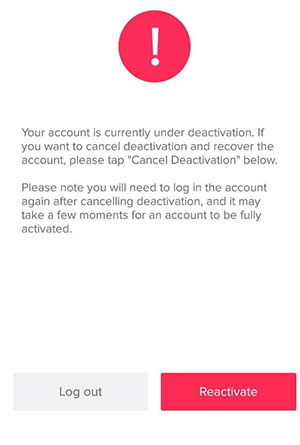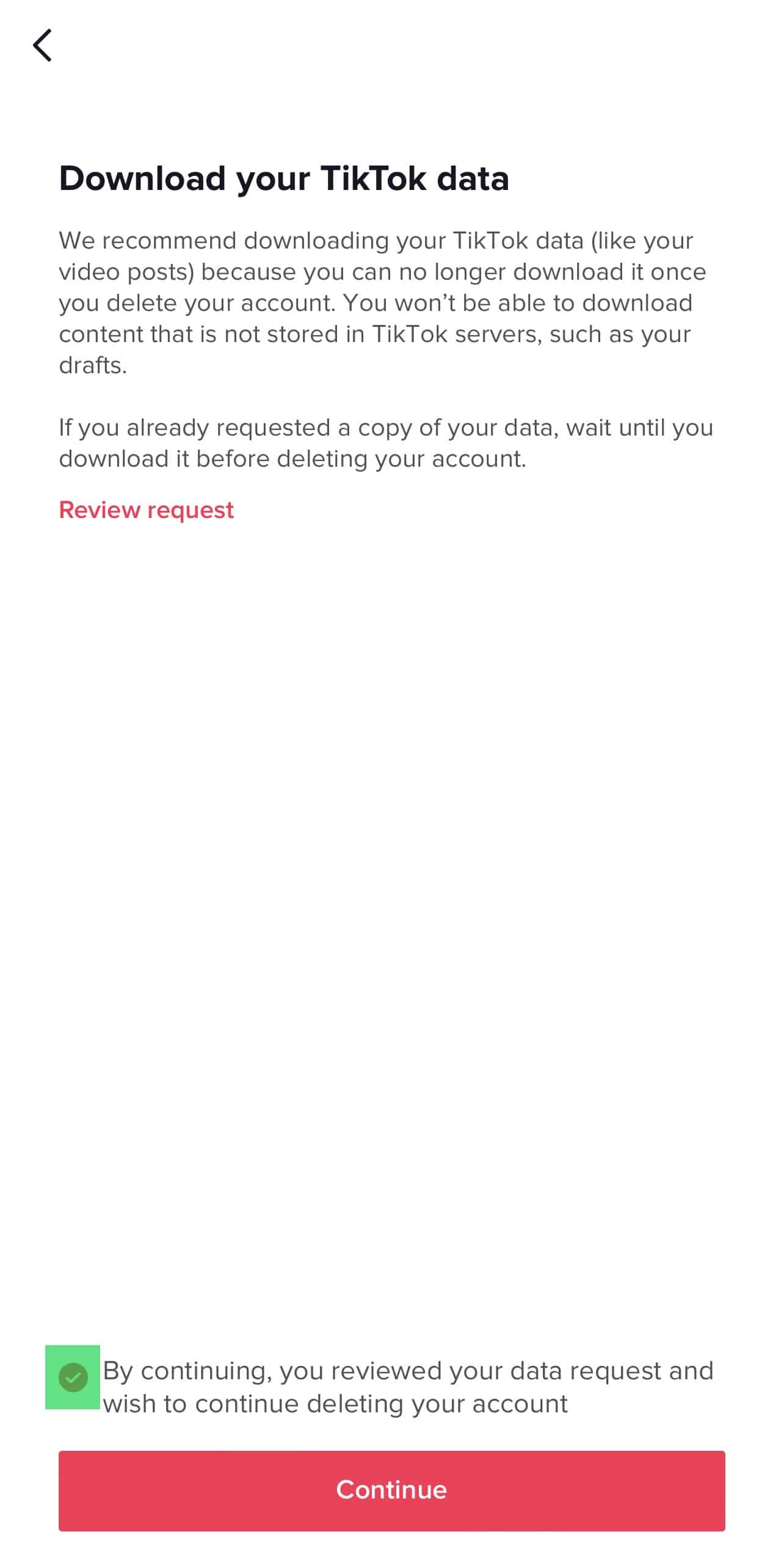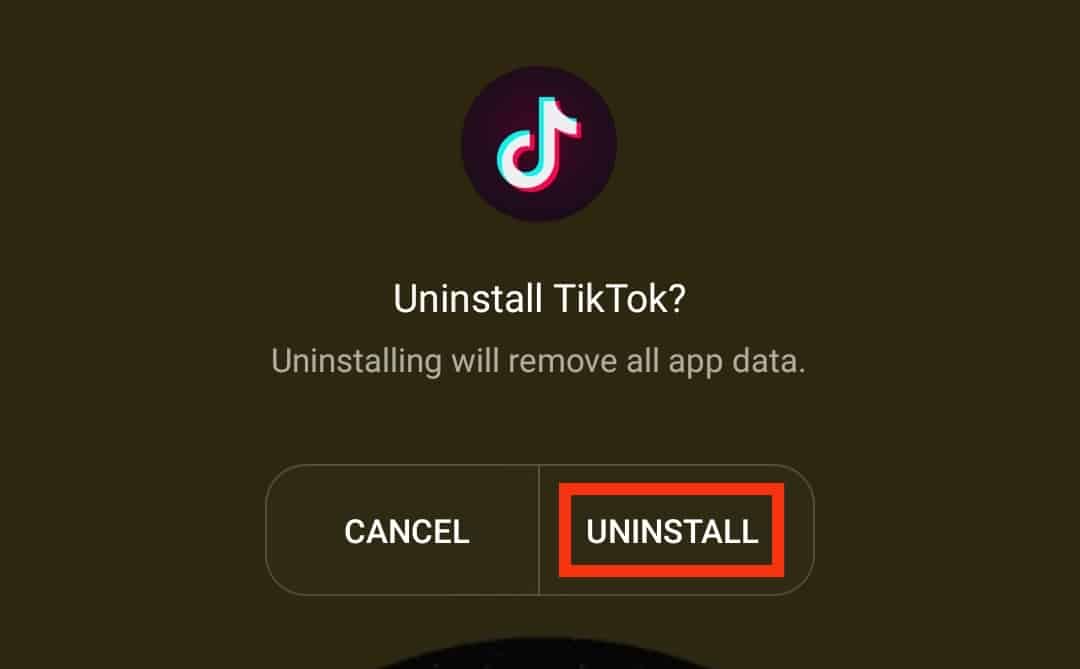Why You Might Want to Delete Your TikTok Account
With the rise of social media, it’s not uncommon for users to feel overwhelmed by the constant stream of information and the pressure to maintain an online presence. If you’re considering deleting your TikTok account, you’re not alone. Many users have wondered, “Can I delete my TikTok account?” and have taken steps to do so. But why might someone want to delete their TikTok account in the first place?
One reason is concerns over data privacy. TikTok, like many other social media platforms, collects user data to personalize the experience and serve targeted ads. However, some users may feel uneasy about the amount of data being collected and how it’s being used. Deleting your TikTok account can help alleviate these concerns and give you more control over your personal data.
Another reason is online harassment. Unfortunately, social media can be a breeding ground for bullying and harassment. If you’re experiencing online harassment on TikTok, deleting your account may be a way to escape the situation and protect your mental health.
Finally, some users may simply want to take a break from social media or focus on other aspects of their life. Deleting your TikTok account can help you avoid the distractions and temptations of social media and give you more time to focus on what’s important to you.
Whatever the reason, deleting your TikTok account is a personal decision that can have a significant impact on your online presence. Before making the decision, it’s essential to understand the implications of deleting your account and what it means for your data and online presence.
Understanding the Difference Between Deactivating and Deleting
When considering permanently removing your TikTok presence, it’s essential to understand the difference between deactivating and deleting your account. While both options may seem similar, they have distinct implications for your data and online presence.
Deactivating your TikTok account is a temporary solution that allows you to take a break from the platform without permanently deleting your data. When you deactivate your account, your profile, videos, and comments will be hidden from public view, but your data will still be stored on TikTok’s servers. This means that you can reactivate your account at any time, and your data will be restored.
On the other hand, deleting your TikTok account is a permanent solution that removes your data from TikTok’s servers. When you delete your account, your profile, videos, comments, and all associated data will be permanently removed. This means that you will not be able to recover your data or reactivate your account once it’s been deleted.
So, what are the implications of each option? Deactivating your account may be a good solution if you’re looking to take a break from TikTok or need to temporarily remove your presence. However, if you’re concerned about data privacy or want to permanently remove your presence, deleting your account may be the better option.
It’s also worth noting that deleting your TikTok account may not completely remove your data from the internet. TikTok may retain some data, such as your username and profile information, to prevent spam and abuse. Additionally, your data may still be available on other platforms or websites that have cached or archived your TikTok content.
Before making a decision, it’s essential to consider the implications of each option and what it means for your data and online presence. If you’re still unsure, you can always reach out to TikTok’s support team for more information.
How to Delete Your TikTok Account: A Step-by-Step Guide
If you’ve decided that deleting your TikTok account is the right choice for you, follow these steps to permanently remove your presence from the platform.
Step 1: Open the TikTok app and navigate to your profile page. You can do this by tapping the “Me” icon in the bottom right corner of the screen.
Step 2: Tap the three dots in the top right corner of your profile page to access the settings menu.
Step 3: Scroll down to the “Account” section and tap “Delete Account.”
Step 4: Enter your password to confirm that you want to delete your account.
Step 5: Tap “Delete Account” again to confirm that you want to permanently remove your presence from TikTok.
That’s it Once you’ve completed these steps, your TikTok account will be deleted, and your data will be removed from the platform.
It’s worth noting that deleting your TikTok account will also delete any associated data, such as your username, profile information, and videos. If you’re concerned about losing access to your data, you may want to consider downloading your TikTok data before deleting your account.
Additionally, if you’re having trouble deleting your account, you can try contacting TikTok’s support team for assistance. They may be able to help you resolve any issues that are preventing you from deleting your account.
Remember, deleting your TikTok account is a permanent decision, so make sure you’re certain that you want to remove your presence from the platform before taking this step.
If you’re still unsure about deleting your TikTok account, you can always try deactivating your account instead. This will temporarily remove your presence from the platform, but you’ll still be able to reactivate your account later if you change your mind.
What Happens to Your Data When You Delete Your Account
When you delete your TikTok account, you may wonder what happens to your data. TikTok’s data retention policy states that they will delete your account data within 30 days of your request. However, this doesn’t mean that all of your data will be immediately removed.
According to TikTok’s terms of service, they may retain some data, such as your username, profile information, and video metadata, for a longer period of time. This is to prevent spam and abuse, as well as to comply with applicable laws and regulations.
Additionally, TikTok may also retain data that is necessary for the operation of their services, such as data related to your account activity, device information, and location data. However, this data will be anonymized and aggregated, meaning that it will not be linked to your individual account.
It’s also worth noting that deleting your TikTok account will not remove all of your data from the internet. For example, if you have shared your TikTok videos on other social media platforms, they may still be available even after you delete your account.
Furthermore, TikTok may also retain data that is stored on third-party servers, such as cloud storage services. This data may not be deleted immediately, and it may take some time for it to be fully removed.
Overall, while deleting your TikTok account will remove most of your data, it’s not a guarantee that all of your data will be immediately deleted. If you’re concerned about data privacy, you may want to consider taking additional steps to protect your data, such as using a VPN or deleting your account from multiple devices.
It’s also important to note that if you’re looking to delete your TikTok account due to concerns over data privacy, you may want to consider reaching out to TikTok’s support team to request that they delete your data manually. This can help ensure that your data is removed as quickly as possible.
Alternatives to Deleting Your Account: Managing Your TikTok Settings
If you’re not ready to delete your TikTok account entirely, there are alternative options to consider. One way to limit your online presence is to manage your TikTok settings. By adjusting your settings, you can control what data is collected, who can see your content, and how visible your account is.
For example, you can limit data collection by turning off location services, disabling personalized ads, and opting out of data sharing with third-party apps. You can also adjust your account settings to make your profile private, which means that only approved followers can see your content.
Another option is to adjust your account visibility. You can choose to make your account visible only to approved followers, or you can make it completely private. This can help you maintain a level of control over who sees your content and when.
In addition to managing your settings, you can also consider using TikTok’s built-in features to limit your online presence. For example, you can use the “Reaction” feature to limit who can react to your videos, or you can use the “Comment” feature to limit who can comment on your videos.
By managing your TikTok settings and using the platform’s built-in features, you can maintain a level of control over your online presence without having to delete your account entirely. This can be a good option if you’re not ready to give up on TikTok entirely, but you want to limit your online presence.
It’s also worth noting that TikTok offers a feature called “Digital Wellbeing” which allows you to track your screen time, set time limits, and schedule breaks. This feature can help you maintain a healthy balance between your online and offline life.
Ultimately, managing your TikTok settings and using the platform’s built-in features can be a good alternative to deleting your account. By taking control of your online presence, you can maintain a level of control over your data and your online presence without having to give up on TikTok entirely.
Common Issues When Deleting a TikTok Account
When trying to delete a TikTok account, some users may encounter common issues that can prevent them from completing the process. One of the most common issues is account verification problems. If you’re having trouble verifying your account, you may not be able to access the delete account option.
Another issue that users may encounter is difficulties accessing the delete account option. This can be due to a variety of reasons, such as a glitch in the app or a problem with your account settings. If you’re having trouble finding the delete account option, you can try checking the app’s settings menu or contacting TikTok’s support team for assistance.
Additionally, some users may encounter issues with their account being locked or suspended. If your account is locked or suspended, you may not be able to delete it until the issue is resolved. In this case, you can try contacting TikTok’s support team to resolve the issue and then try deleting your account again.
It’s also worth noting that if you’re using a third-party app or service to manage your TikTok account, you may encounter issues when trying to delete your account. In this case, you can try contacting the third-party app or service for assistance or try deleting your account directly through the TikTok app.
Finally, some users may encounter issues with their data being retained by TikTok even after deleting their account. If you’re concerned about data retention, you can try contacting TikTok’s support team to request that they delete your data manually.
Overall, while deleting a TikTok account can be a straightforward process, some users may encounter common issues that can prevent them from completing the process. By being aware of these issues and taking steps to resolve them, you can ensure that you’re able to delete your TikTok account successfully.
After Deleting Your Account: What to Expect
After deleting your TikTok account, you may wonder what to expect. The good news is that your account will be permanently removed from the platform, and your data will be deleted. However, it’s essential to understand that this process may take some time.
According to TikTok’s terms of service, it may take up to 30 days for your account to be fully removed from the platform. During this time, your account may still be visible to others, and your data may still be accessible.
Additionally, you may still receive emails or notifications from TikTok after deleting your account. This is because TikTok may still have your email address or other contact information on file. However, you can easily opt-out of these communications by following the instructions provided in the emails or notifications.
It’s also worth noting that deleting your TikTok account may have consequences for your online presence. For example, if you have shared your TikTok videos on other social media platforms, they may still be visible even after you delete your account. Additionally, if you have used your TikTok account to log in to other apps or services, you may need to update your login credentials to avoid any issues.
Overall, while deleting your TikTok account may take some time, it’s a straightforward process that can help you permanently remove your presence from the platform. By understanding what to expect after deleting your account, you can ensure a smooth transition and avoid any potential issues.
It’s also important to note that if you’re looking to delete your TikTok account due to concerns over data privacy, you may want to consider reaching out to TikTok’s support team to request that they delete your data manually. This can help ensure that your data is removed as quickly as possible.
Conclusion: Permanently Removing Your TikTok Presence
In conclusion, permanently removing your TikTok presence is a straightforward process that can be completed in a few steps. Whether you’re looking to delete your account due to concerns over data privacy, online harassment, or simply wanting to take a break from social media, this article has provided you with the information you need to make an informed decision.
By understanding the difference between deactivating and deleting your account, you can choose the option that best suits your needs. Additionally, by managing your TikTok settings, you can limit data collection and adjust your account to be less visible.
It’s also important to be aware of the potential consequences of deleting your account, including the impact on your online presence and any potential issues that may arise during the deletion process.
Ultimately, permanently removing your TikTok presence is a personal decision that should be made with careful consideration. By following the steps outlined in this article, you can ensure a smooth transition and avoid any potential issues.
Remember, if you’re looking to delete your TikTok account, you can do so by following the steps outlined in this article. If you have any further questions or concerns, you can always reach out to TikTok’s support team for assistance.
By taking control of your online presence, you can ensure that your data is protected and your online experience is safe and enjoyable.







